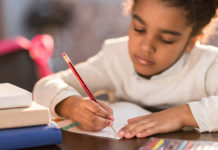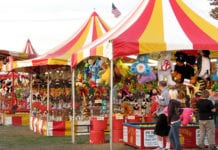When I teach Study Skills to students, one of the most important things we do is create a learning portfolio for each individual student that is composed of a number of different inventories and tests that assess the learning styles and personality of each child.
As we go through the different assessments, I explain to them what the results mean for them and how they can use the information to help them in their school work. At the end, all of this information is sent home in a learning styles folder so the parents can use the information to continue helping their child learn to their full potential.
It is always exciting to see a student become more self-confident and better prepared for school as a result of going through all these assessment steps.
Below you will find a brief summary of each assessment I use for the students. For more information, visit my website www.jodycapehart.com where you will find other related articles as well as certain materials to purchase. You can also email me at jody.capehart@jodycapehart.com with any questions or needs.
1) Personality: DISC Model: We begin with personalities because it is an essential life skill. We want to understand ourselves and how to get along with others.
2) PERCEPTUAL STRENGTHS or MODALITIES: This is how the student takes in information and includes visual, auditory, tactile, and kinesthetic. There are explanations for each as well as suggestions for study tips in the student’s folder.
3) PART OF BRAIN: ANALYTIC or GLOBAL: We test to see if a student processes new information in an analytic, way which is more logical and linear, or whether they are more global, which means they take in the whole picture first and then the details. We discussed the ramifications of this in terms of doing math assignments and taking tests. For example, if a student is more global, they may have a tendency to get overwhelmed when seeing a whole page of math problems or seeing a whole test. We learn how to take a piece of colored copier paper, cut out a window, cover up the paper, and only do what is in the window.
4) PATTERNS OF LEARNING: GREGORC STYLE DELINEATOR: This is an excellent test developed by Dr. Anthony Gregorc to see how the student processes information once it is in the brain. We also worked on ‘bridging’ techniques to help the student adjust to different teachers’ styles of presenting material based upon their learning style.
5) PREFERENCES IN THE LEARNING ENVIRONMENT: Research tells us there are 21 factors in the environment that affect learning. We focus on the main six which are:
* Light: bright, soft, or neutral (it doesn’t affect the student)
* Sound: This one is very important because the research shows that if a student learns better with a sound component, it is important to choose the right component. The students will often say they learn best with television, iPod or their computers. However, research supports that the only sound components that facilitate learning in a positive manner are classical music or white noise.
Important note to parents: My students know that if they learn better with a sound component, the best is classical music because it organizes and structures the brain. Kids must cultivate a love for classical music and this takes training. I strongly encourage you to give this some serious thought.
* Design: Does your child do better sitting at a desk/table or working on the floor or chair? It may seem sloppy to consider allowing your child to work on the floor or their bed. However, there is substantial research to support that for some learners, this works better for them.
My opinion is, it’s a privilege….abuse it or lose it. If you allow your child to work on their bed or on the floor and their schoolwork improves, you can go with it; if not, it’s back to the desk or table.
The other three factors are temperature, food-intake, and the time of day that your child best learns. These three factors can have a strong influence on when and how your child does his/her homework. In August, as you are setting up your child’s homework environment, it is important to take time and look at your child’s notes in this area and set up a homework environment that is conducive to your child’s style. If you need help, feel free to contact me.
6) We also took a MULTIPLE INTELLIGENCE inventory to see how their interests and gifting factor in with their learning styles. It encourages students to see the big picture and how God is leading them through their gifts and learning styles. School does have a purpose and is the avenue to where God is brining them to His purpose for their lives.
7) We integrate various STUDY SKILLS STRATEGIES based upon their learning styles including:
- how to set up a homework environment based upon how they learn
- how to study for a test
- test taking tips
- successful study strategies
8) We learn BRAIN TIPS such as:
- importance of being hydrated
- importance of being rested
- importance of exercise
- doing cross laterals (crossing the midline of the brain)
- having live plants in the room where we study for ionization
- importance of not having television on when we study
(There are some students who want to prove me wrong on this, but I tell them they first have to bring the research before I will support them on this one. So far to date, no one has brought me this research. It doesn’t exist.)
- keeping video games to a minimum during the school week
- eating well, and paying attention to what they eat
9) We check to see what hand and eye are DOMINANT to help them know where is the best place to sit in the classroom in order to reduce eye fatigue.
10) Overall, we work on being PRACTICAL strategies to help them become LEARNERS for LIFE.
The best part of all of this, for me, is seeing the final result in a healthy, balanced student who now feels better prepared for the challenges of school. This is especially true as most of my study skills classes are for students in grades 5-8. These classes provide them with the skills and insight needed for success in high school and beyond.










